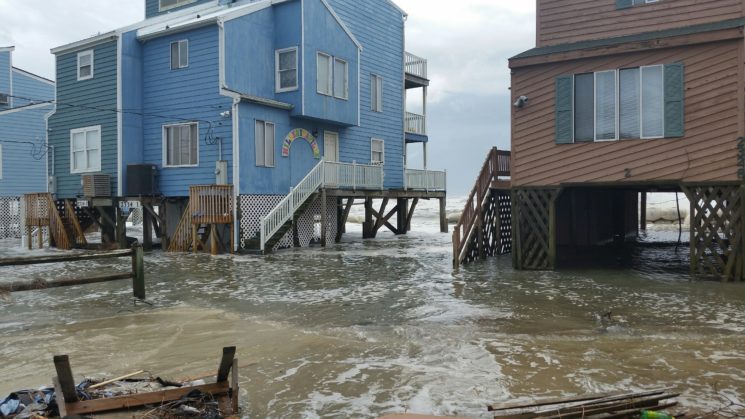
Wind-borne standards in the North Carolina Residential Building Code saved flood insurance policyholders in nine coastal communities over $1.2 million during the past year.
The Community Rating System (CRS) — a program that helps foster floodplain management — reduces flood insurance premium rates for policyholders, enhances public safety, and reduces damages to property and public infrastructure. To encourage implementation of better building codes, the program’s incentives rely on a local building code evaluation before they kick in.
“The insurance incentives encourage communities and individuals to adopt high storm-resistant standards,” says Spencer Rogers, North Carolina Sea Grant’s coastal construction and erosion specialist. “In this case, flood insurance incentives encourage building codes with higher wind standards. Communities that require higher CRS standards can qualify all flood insurance policies for the discounts.”
Over a decade ago, Rogers collaborated with stakeholders in the building code and construction sectors to modify the code to accommodate wind-borne standards along the North Carolina coast.
Rogers says North Carolina Sea Grant’s work on the updated standards meant that 18,242 policyholders in nine coastal N.C. communities paid less on their premiums in 2018 alone — but such savings aren’t new.
“This has saved property owners about $10 million over the last decade.”
Contact Spencer Rogers: smrogers@ncsu.edu or 910-962-2491
Photo: Outer Banks flooding, courtesy of NCDOT (CC BY 2.0)